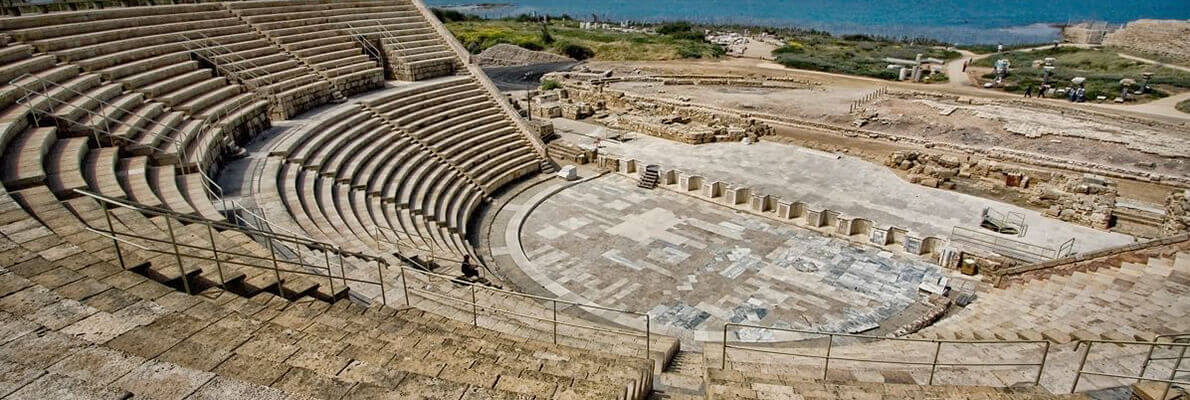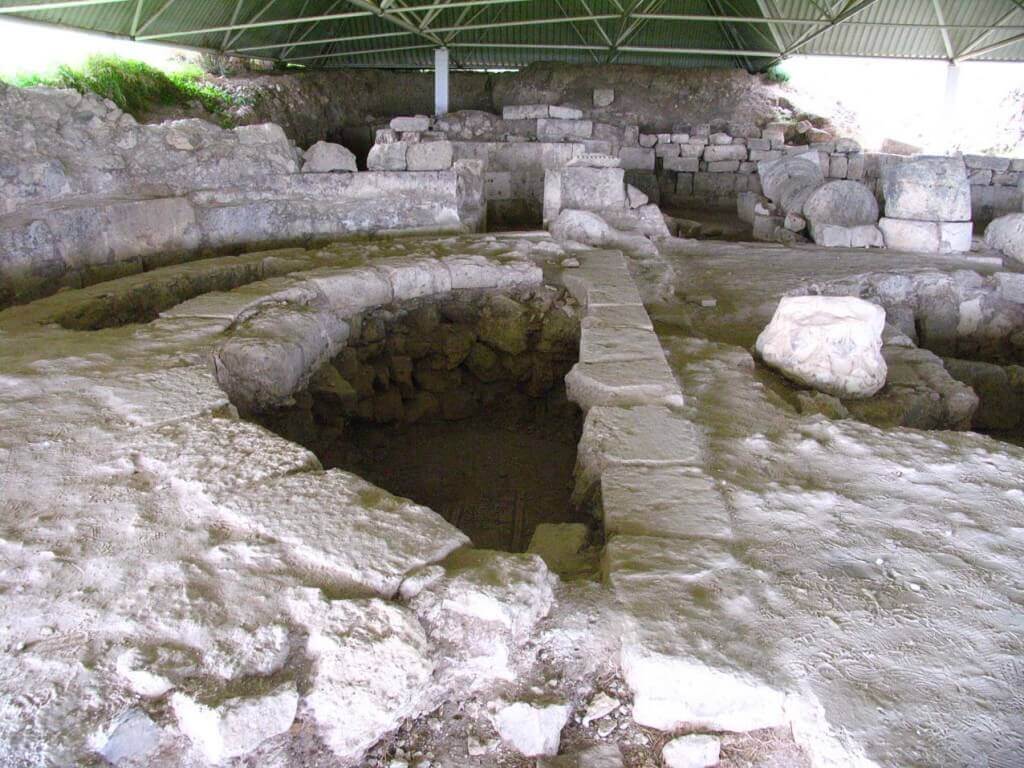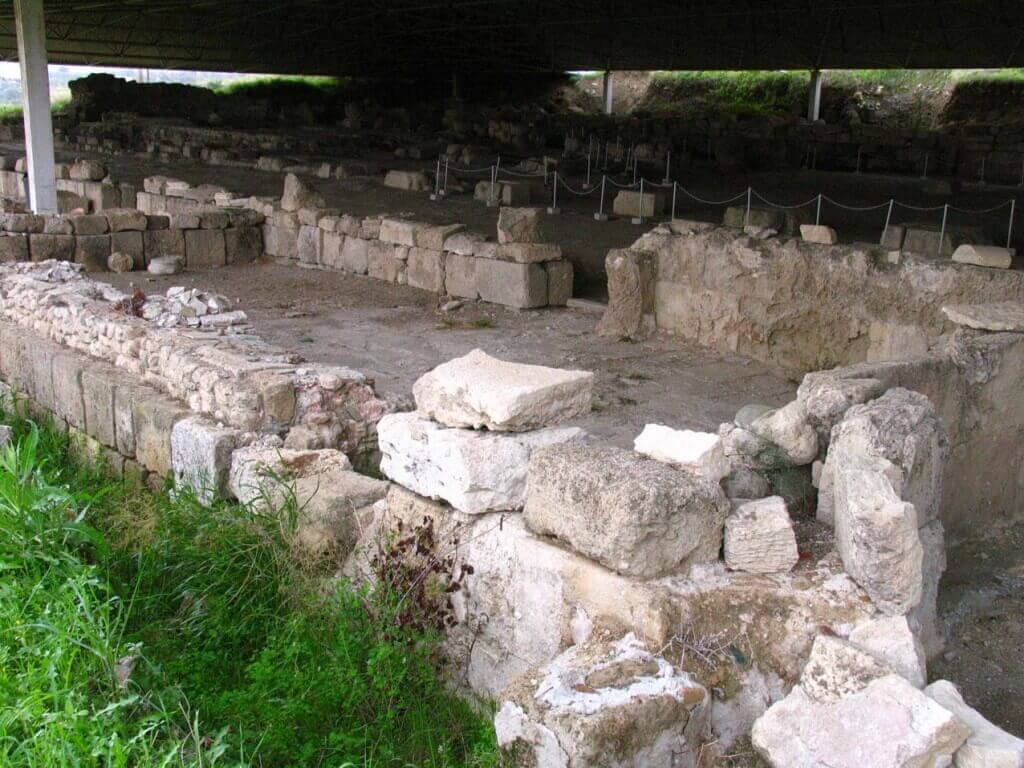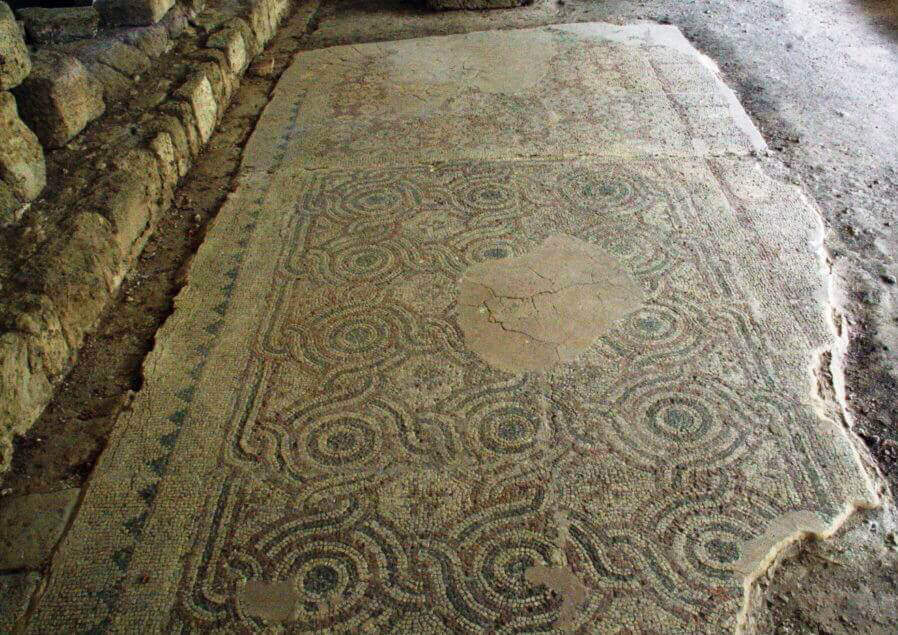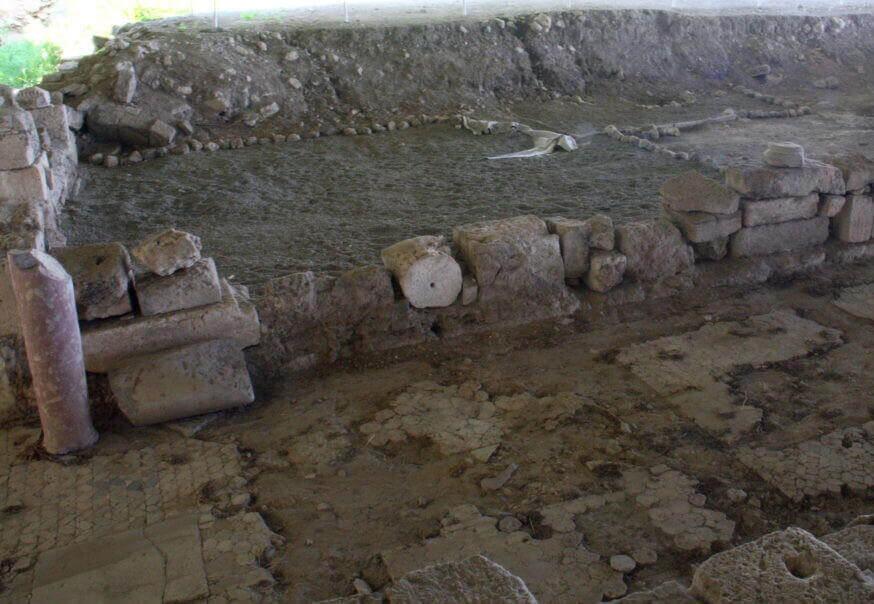In the north-west of Cyprus in the Gulf of Morphou near the village of Gemikonagi are located ruins of an ancient city Soli. From the once prosperous port city today there are few traces that would help to fully imagine all the power and beauty of this settlement. Nevertheless, lovers of historical monuments will not be disappointed by a trip to Soli.
The history of the ancient city of Soli: from its heyday to its decline
Although the first dated mention of the city of Soli dates back to the 6th century BC (the list of payers of the Assyrian king Asargadon), archaeologists believe that the first settlements appeared on this site in the 12th century BC. In the 6th century BC, Soli was already known as a city founded by the will of the sage Solon. The city also owes its name to the sage.
The location of the Salt was extremely successful: the land in this region was fertile, the Xero River flowed nearby, there was access to the sea and a huge harbor, and ore deposits were discovered. The city grew rapidly and became a large and prosperous industrial center. The inhabitants were engaged in agriculture, worked in the mines. Copper from Salt was in demand throughout the Mediterranean. At the beginning of our era, the Roman emperor Augustus ruled the city, who leased the copper mines to King Herod of Judea. The latter, in turn, sent miners from Judea to the island.
War caused the fall of the ancient city of Soli
However, in 115, the peace in the city was broken – there were serious skirmishes between jews and romans, as a result of which the jews fled from the island. gradually, the mines began to decline. In the 4th century AD, another disaster occurred – an earthquake severely destroyed the harbor, and also affected the city. the dark streak in soli's life did not end with this event. In 648, the Arabs attacked Soli and finally destroyed the ancient city. the departed inhabitants left it and rushed inland.
Already an empty and uninhabited city, Soli was to experience another devastation – during the period of colonization of the island by the British, everything that could be used as building material was taken out of the city for the construction of the Suez Canal and the Port of Said.
In 1920, excavations began on the site of the long-forgotten city. Despite the fact that the city was looted many times, archaeologists managed to find many artifacts, the most significant of which are now stored in the Museum of Nicosia.
What to see in Soli?
The first thing that catches the eye of tourists coming on an excursion to Soli is a huge metal canopy. This canopy was built to protect valuable archaeological finds from burning out under the sun. Get ready for a meeting with truly ancient sights. Today, the Salt can be seen:
— The ruins of a 4th century Basilica. It was once an impressive 5-nave structure, which after two centuries of its existence was rebuilt into a 3-nave basilica. In the lobby there was an atrium and a fountain, along the perimeter there were 12 powerful columns.
Today, only the preserved foundations remind of them. The main feature of this church is an impressive floor mosaic. Geometric and floral ornaments, images of animals are laid out of colorful stones. The most famous piece of the mosaic is a swan surrounded by 4 dolphins. Since the mosaic could not be used as a building material, it was not touched by either the Arabs or the British. It is her today and protects from burnout constructed canopy.
The first thing that catches the eye of tourists coming on an excursion to Soli is a huge metal canopy. This canopy was built to protect valuable archaeological finds from burning out under the sun. Get ready for a meeting with truly ancient sights. Today, the Salt can be seen:
— The ruins of a 4th century Basilica. It was once an impressive 5-nave structure, which after two centuries of its existence was rebuilt into a 3-nave basilica. In the lobby there was an atrium and a fountain, along the perimeter there were 12 powerful columns.
Today, only the preserved foundations remind of them. The main feature of this church is an impressive floor mosaic. Geometric and floral ornaments, images of animals are laid out of colorful stones. The most famous piece of the mosaic is a swan surrounded by 4 dolphins. Since the mosaic could not be used as a building material, it was not touched by either the Arabs or the British. It is her today and protects from burnout constructed canopy.
— Agora - another attraction of salt. It was once a large market square with a marble fountain. Today, only shapeless fragments remind us of it.
—Amphitheaterlocated on a hillside, it makes a special impression on tourists. It is believed that this amphitheater was built in the 2nd century on the site of another, Roman, amphitheater. today's amphitheater holds 3.5 thousand spectators, while the roman one held much more.
One can only guess how magnificent this structure looked in its time. The sea served as an incomparable backdrop for the theater, the floors of the amphitheater were made of marble, and statues were used as decorations for the structure.
By the way, the famous marble statue of Aphrodite of Cyprus, now stored in the Archaeological Museum of Nikossia, was found at the excavations of the amphitheater. The seats were lined with stones, but were used for the construction of the Suez Canal. To the west of the amphitheater were the temples of Aphrodite and Isis, currently excavations there have not yet begun.
— Necropolisdiscovered in 2005, and the gold jewelry, tiara and other valuables found there suggest that one of the rulers of the city of Soli was buried here. The artifacts found today are kept in the museum of the city of Morphou.
What to expect from a trip to Soli?
You can go on a tour in Soli as part of an organizational group or on your own. Near the key attractions there are information signs with text in English, allowing you to get an impression of the objects. You can wander in Salt for half a day or an hour. The most common tourist cameras are the mosaic on the floor of the ruined basilica and the amphitheater.
The cost of visiting the attraction is 3 euros. The city is open from 9.00 to 17.00. There Is a car park near the Carport.
You can go on an excursion to Soli as part of an organizational group or on your own. Near the key attractions there are information signs with text in English, allowing you to get an impression of the objects. You can wander in Salt for half a day or an hour. The most common tourist cameras are the mosaic on the floor of the ruined basilica and the amphitheater.
The cost of visiting the attraction is 3 euros. The city is open from 9.00 to 17.00. There Is a car park near the Carport.
How to get to the Salt?
To visit the city of Soli, tourists come from different resorts of Cyprus. Wherever you're coming from, keep heading for the city of Morphou. In the city behind the square with the monument to Ataturk, you need to turn left and go further, all the time keeping to the main road. After leaving Morfu, you will have to go about 18 km (follow the signs), 5 km to your destination you will see the sea on the right side. And the fact that you are very close to the goal, you can guess from the old ore loader, pushed into the sea. Those who use the navigator will need the coordinates of the parking lot near the Salt — 35.140923 32.813027.
To visit the city of Soli, tourists come from different resorts of Cyprus. Wherever you're coming from, keep heading for the city of Morphou. In the city behind the square with the monument to Ataturk, you need to turn left and go further, all the time keeping to the main road. After leaving Morfu, you will have to go about 18 km (follow the signs), 5 km to your destination you will see the sea on the right side. And the fact that you are very close to the goal, you can guess from the old ore loader, pushed into the sea. Those who use the navigator will need the coordinates of the parking lot near the Salt — 35.140923 32.813027.

